Every year guests ask us about physical fitness and our high elevation wilderness hunts. It’s an easy question to answer. Hiking a minimum of several miles a day, dealing with inclement weather, and coming to 11,000 ft. from sea level will present a challenge. Physical preparation for that challenge is the most important of all the controllable variables. Other variables like weather, the rut, and luck weigh heavy when it comes to your chances of success, but don’t worry about what you can’t change. Take the person you are today, regardless of your current fitness level, and compare that to the person you will be after 3-6 months of physical preparation for the hunt. The latter individual will have a higher success rate and enjoy themselves more on our fair chase wilderness hunts, guaranteed.
I genuinely believe when you book a hunt with us, you have committed yourself to a physical challenge. Like marathon prep, preparation for that challenge will bleed over positively in other areas of your life. Those rewards are part of the return you will get from your investment in a hunt with us. Hunts where you shoot a deer over the hood of a truck won’t do that for you.
You should speak to your doctor before performing our workouts and taking on the challenge of our hunts. Also, remember that we are talking about preparation in this article. If you are reading this two weeks before your trip, don’t worry about your physical shape. You’ve got, what you’ve got. Take it easy on your hunt and enjoy yourself. Pushing yourself beyond your limits is the easiest way to ruin a hunt. If you’ve got a few months, work yourself into these workouts. It will pay off.
I asked my wife to help me with this piece. She is a long-time personal trainer, marathon runner and has years of experience developing workouts. Even in the middle of the season, after I’ve been packing and being in the wilderness for months, she can hike me into the ground. And that’s as the mom of a two year-old and a 6 month-old! The other undeniable fact is that I am one ugly son-of-a-bitch and she is attractive. Hence, the visual presentation of our example workouts has benefited from her participation.
Hope you enjoy.
Building Cardio to Combat High Altitude
It’s not the horses that will knock you on your ass, it’s the altitude. The challenge that most hunters have at altitude is not an inability to get out and hunt hard the first day. It’s the third, fourth and fifth day where they falter. When you get exhausted at altitude it is harder to bounce back. I don’t know the science, but I’ve seen it enough to say that it is a statistical fact. Even physically fit hunters will end up sleeping in on the third day if they over work their cardiovascular system in the first couple days. This presents a real problem when elk hunting.
Wilderness elk hunting is about reaching that pivotal moment. You’ve been hunting for multiple days, just seeing a handful of cows and spikes, then on the fourth day you slip into a hidden meadow at the break of dawn. A 6×6 is just standing there. An 800lb target. The smoke of his breath is blowing out of his nose and his dark mane is flickering with morning dew. Your hunt just did a 180, because you made it out that morning. Being in the field as much as possible is how you reach these moments, recovering on a cot is not.
So, our goal is to prepare you to avoid exhaustion at altitude while getting you out in the field as much as possible. If you are training at sea level, that means aerobic fitness. Focus on cardiovascular exercises that involve high intensity training. High intensity interval training will closely mimic what you’ll find in the wilderness: fast, steep climbs followed by rest periods.
Here are a couple examples of high intensity interval training you can do before your trip.
Treadmill/Stairmaster Training
If you have access to a treadmill whether at home or a gym, use the incline. I’m not going to sugar coat it; it’s not fun. Running on a zero incline will do little for your hunt preparation. That’s for yuppies, not elk hunters.
Beginner Workout:
If you consider yourself a beginner, hop on a treadmill and walk. Start walking at a 1.7 mph pace with a 2 degree incline. Every three minutes increase your incline by 1 degree. Keep increasing your incline for 15 minutes, then decrease back down to 3 degrees for your last 15 minutes. Aim for 30 minutes of work.
Don’t grab the handle bars and lean back on the treadmill. That’s for vegetarians, not elk hunters. If you feel you have to lean back, decrease your incline.
Once you have reached inclines of 6-7 degrees, your hamstrings are getting 400%+ activity compared to walking on level. Your glutes (i.e. ass) are getting close to 300% more activity. The longer you can stay in this zone, the closer you are getting to the mountain hunting environment. We routinely kill elk on 20-40 degree slopes.
Elk Hunter Treadmill Workout:
The next stage of treadmill training is slightly higher paced, more incline, and more fluctuation.
Minutes 1-5: Warm up at incline of 2.0 degrees pace 2.5 mph.
Minute 6- pace 2.5 inline 2.5
Minute 7- pace 2.5 incline 5
Minute 8- pace 2.5 incline 6
Minute 9- pace 2.5 incline 7.5
Minute 10- pace 2.5 incline 8.5
Minute 11-15: pace 2.5 incline 9.0
Minute 16-20: pace 3.5 incline 2.0
Do this set for two cycles. 40 minutes total.
Once this workout is a breeze, speed it up a bit, heavier incline and do three cycles. Remember, you might be doing 6-10 equivalent cycles during your hunt, in thinner air.
Elk Hunter Stairmaster Workout:
Stairmasters or stairs are a great way to train as they closely mimic hiking uphill. Hop on a Stairmaster and set it at a challenging level for 1 minute (for example, 1 minute at level 9) then follow with 2 minutes at an easier level.
Minutes 1-5: warmup/rest at level 5 for 5 minutes
Minute 6 Level 8
Minute 7-8: Level 6
Minute 9 Level 10
Minutes 10-11: Level 8
Minute 12 Level 12
Minutes 13-14: Level 10
Minute 15 Level 14
Continue this pattern for 2 cycles for a 30 minute workout.
Start wherever you feel comfortable but keep yourself accountable! You want a little discomfort, that’s when change occurs. People who cheat by pushing down on the side rails and leaning forward eat granola, not elk meat!
Hiking
If you have mountains or hills nearby, go for a hike as your aerobic exercise. Start with hikes for 30 minutes, then an hour. Once you feel like you’ve mastered the hike, add some weight. Pack your hunting gear in your backpack and hike with it on. This is also a great way to ensure the comfort of your pack. You will be wearing a day pack for up to seven days straight. Making sure it fits well is essential.
Now I’ll add a little controversial element to this hiking stuff. You have to expose yourself to hiking off-trail. Elk hunting on foot will take you bushwhacking at some point. Exposing your ankles, knees and, most importantly, your mind to traversing off-trail and lightly used terrain is a big plus. Beaten down paths are the thoroughfare of mules, horses and tie-dyed wearing cannabis lovers, not elk hunters. The problem is that land use managers, to protect public resources, want to keep you on maintained trails. This means you need to find somewhere more remote or even private land where your off-trail hiking doesn’t cause lasting impact.
When structuring your week’s workouts, do cardio at least two days per week. Three times per week is optimal.
The last thing I want to mention regarding cardio preparation is about keeping motivated. Cardio workouts are monotonous. The ways we have been able to combat the bore: 1. Learn how to download podcasts to an iPhone or other music player. Listening to interesting interviews can make cardio training a relaxing part of your day. 2. Consider group fitness class. Group spinning classes are one of the best because most of them incorporate a form of high intensity training into their routines. These classes are widely available, inexpensive and give you a time/destination for your cardio.
Elk Hunter Strength Training
It is important that you do some strength training in preparation for your hunt. Even in our guided hunts, carrying your rifle, binoculars, and lightweight day pack can wear on the unprepared muscles. If you are coming for our drop camps, the general chores of living in the mountains for a week are accomplished with much more ease if you bring a couple “guns” in addition to your rifle. Oh man, that was a crap joke. Well, you get the point.
The other reality of our geography is that if you can manage steeper terrain, you can get into some untouched honey holes. For the most part, we aren’t hanging off cliffs and traversing shale rock, but maneuvering through down timber and steep trail sections are common place. Unstable surfaces; rocky, muddy, snow covered are the norm. Core body strength can really help you feel confident in these situations.
Stability exercises in particular will fire up your core and activate muscles that are often ignored. Performing these exercises before your trip will help give you a solid foundation, decreasing your risk of injury.
These exercises are split into two circuits. Perform 2 sets of 10 reps of each exercise in circuit one before moving on to circuit two.
For these exercises, you will need a stability ball which can be found at most gyms. You can also purchase one (they’re pretty cheap) at your nearest Walmart, Target or Amazon
.
Circuit One (lower body focus):
Circuit Two(core/upper body):
Pushups- feet or thighs resting on ball
Rear Delt Fly’s (can use a pair of hand weights for this)
If you feel like some of these moves are too easy, here are a couple more advanced moves that you can use as replacements:
More Advanced Exercises
Lower Body:
Core/Upper Body:
Beginners, perform these exercises twice a week. Intermediate or advanced, up to four times a week. Combine these with your aerobic training.
Elk Hunter Kettlebells
For those guests that are more adventurous, the all-time best preparation for wilderness hunting is kettlebells. Kettlebell training combines the best of aerobic training and strength training. Most kettlebell exercises are compound movements that engage your entire body. Hence, your workouts can be shorter compared to a typical session. When you get a short-lived shot opportunity that requires a quick hike to get into position, your heart will start thumping like it’s going to blow your rib cage apart. The only exercise that comes close to that is explosive kettlebell training.
Keep in mind that kettlebell training, done right, is easier on your body than other forms of exercise. You’re not constantly pounding the same muscles, joints and bones. You are doing a full body workout.
The best way to start is to take a couple group classes. These classes are coming more and more common at local gyms. A certified instructor can help you get down the basic moves with proper form. Once you are ready to go at it alone, buy a couple bells and a workout video or two.
These things are like entire gyms in a steel ball, you will only need a couple sizes. Typical kettlebell sizes needed:
| Average Huntress | 15lbs, 25lbs, 35lbs |
| Strong Huntress | 25lbs, 35lbs, 45lbs |
| Average Hunter | 30lbs, 45lbs |
| Strong Hunter | 40lbs, 55lbs |
The best prices we have found are CAP Kettlebells off Amazon
, using Amazon prime. Yeah that’s right, free shipping on huge weights. Awesome!
A great at home workout video series is the SKOGG System. Also available on Amazon
.
If you’re interested, here are a couple workouts to get you started:
Beginner Kettlebell Workout
5 rounds
10 kettlebell swings
10 clean and press (one arm at a time)
10 windmills (one arm at a time)
10 snatches (one arm at a time)
Intermediate/Advanced
3 rounds
30 seconds kb swing
10 burpees
30 second Turkish get up- right side
10 burpees
30 seconds Turkish get up- left side
10 burpees
30 seconds squat
10 burpees
30 seconds snatch- right side
10 burpees
30 seconds snatch- left side
If burpess make you sick to your stomach, replace them with pushups. It is hard to replace the great workout they provide, but they do make some people sick due to the constant movement.
Best of luck preparing for your hunt. Stay safe, avoid injury and slowly progress on your training. The more you put into this, the more you will enjoy the physical aspects of the hunt.
Here are a few links of other sources for ideas on physical preparation for wilderness elk hunting:
Sole Adventure – A bunch of great introductory articles, with a section dedicated to physical prep.
Field and Stream Part 1 and Part 2 – Basic framework put together by Cameron Hanes.

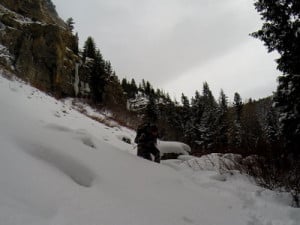
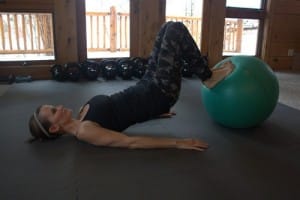

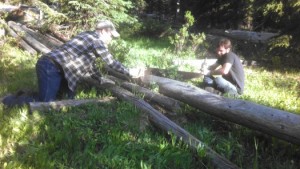
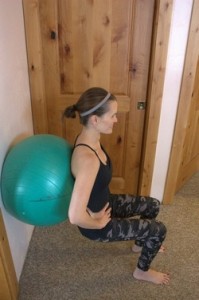
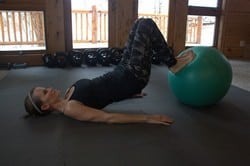



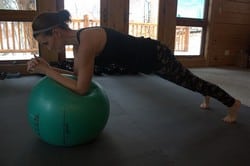




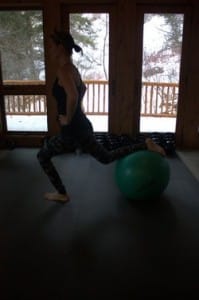




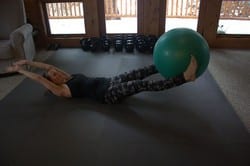
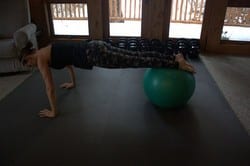

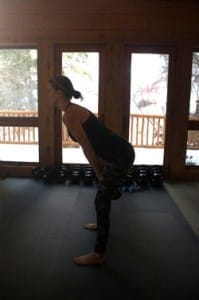
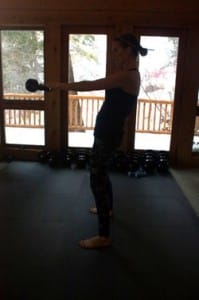
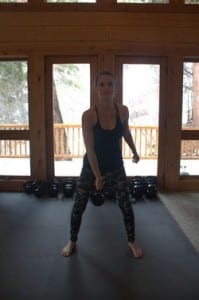
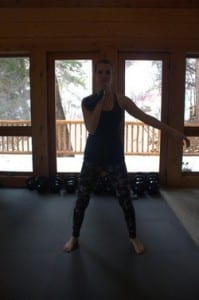
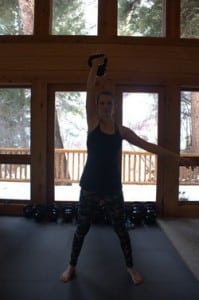
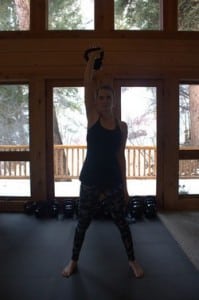

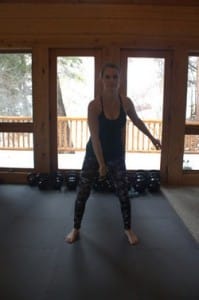

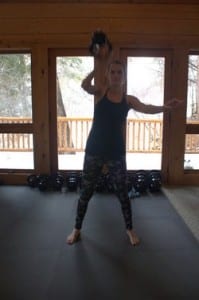







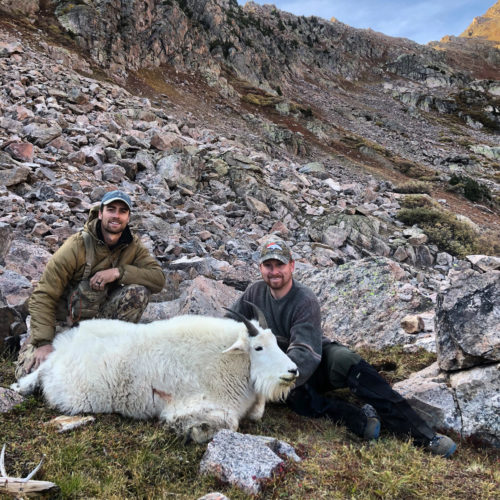

Do you feel high altitude training mask is necessary?
Hi Rob,
I’m not an expert on that subject, but my understanding is the current masks don’t do a lot for you in terms of getting you better acclimated to being at altitude. They work more on restriction of respiration, but don’t change the composition of the air you are breathing (altitude changes the composition, less oxygen). It seems that the research indicates it’s doubtful they help much.
Thanks,
Cliff